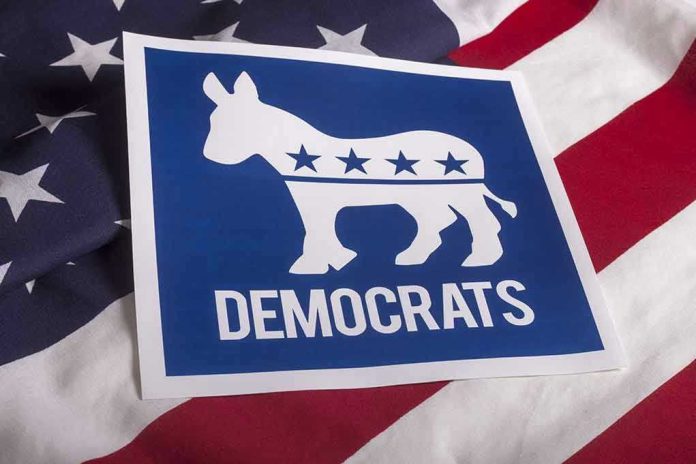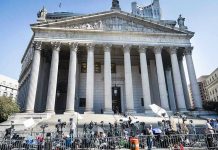
When $11 billion in vital American infrastructure grinds to a halt overnight, the real story isn’t the money—it’s the fierce political chess match that just turned millions of commuters and workers into pawns.
Story Snapshot
- The Trump administration froze over $11 billion in federal infrastructure funds, primarily targeting Democratic-led states, amid a government shutdown.
- Officials blame the funding halt on Democrats’ refusal to cut a budget deal, while critics allege the move is partisan punishment.
- Projects from New York to San Francisco and Boston are in limbo, threatening local economies and public trust in federal support.
- The pause marks a new escalation in the use of federal funding as a weapon in partisan budget battles.
Trump Administration Wields the Purse Strings During Shutdown Standoff
Federal infrastructure projects don’t just shape skylines—they anchor local economies, provide jobs, and fuel public trust in government. On October 17, 2025, President Trump’s Office of Management and Budget, led by Russell Vought, froze $11 billion in Army Corps of Engineers projects across a dozen Democratic-controlled states. The administration attributed the freeze to the ongoing government shutdown, which it blamed squarely on Democratic lawmakers’ refusal to strike a spending agreement. The affected projects include New York’s Hudson Tunnel, Cape Cod bridges, and major water and transportation works in San Francisco and Baltimore. This action follows earlier freezes, including $18 billion for New York City and $8 billion in climate projects, intensifying a pattern of targeting blue states during fiscal standoffs.
OMB Director Vought delivered the message bluntly: the projects are now “lower-priority” and under review for possible permanent cancellation. While the stated rationale is fiscal responsibility during a shutdown, the freeze’s focus on Democratic strongholds leaves little doubt about the deeper political undercurrents. Democratic governors like Kathy Hochul of New York and congressional leaders such as Rep. Kweisi Mfume of Maryland immediately condemned the action as a partisan attack with real consequences for jobs, safety, and regional infrastructure. The Army Corps of Engineers, caught in the crossfire, has offered no further details due to Defense Department media restrictions during the shutdown, adding a layer of uncertainty for affected communities and contractors awaiting word on their futures.
Political Fault Lines Deepen as Infrastructure Becomes Collateral
This funding freeze didn’t emerge in a vacuum. Partisan disputes over the federal budget—spanning healthcare, climate, and immigration—set the stage for the October shutdown, and the Trump administration’s readiness to leverage federal dollars as political pressure has precedent. Earlier actions targeting Democratic-led states and cities have drawn similar outcry. With Congress deadlocked and the Army Corps forced to comply with executive orders, Democratic officials have little recourse but public condemnation and the threat of legal action. The White House’s messaging is clear: end the shutdown on our terms, or watch your state’s infrastructure ambitions wither. For those watching from New York, California, or Massachusetts, the message feels personal and the stakes immediate.
The shutdown’s impact is cascading. The pause halts planning, contracting, and ongoing construction, throwing thousands of workers and businesses into limbo. Some projects may survive, but others face ballooning costs or outright cancellation if the freeze drags on. Local economies reliant on federal investment could see layoffs and stalled growth, while commuters and residents lose out on critical improvements to transportation, water, and environmental safety. The specter of future shutdowns—with infrastructure used as a bargaining chip—now looms larger, raising questions about the long-term stability of federal-state collaboration in public works.
Expert Perspectives Warn of Precedent and Polarization
Infrastructure and public policy experts caution that politicizing federal funding undermines not just immediate projects but the entire framework of long-term public investment. By targeting blue states and linking funding to partisan negotiations, the Trump administration risks deepening distrust between states and Washington. The Army Corps’ silence, enforced by shutdown protocols, leaves communities in the dark and contractors wary of future commitments. Scholars of federalism warn that this tactic, while not without precedent, marks an escalation that could make bipartisan appropriations even harder in the years ahead. The risk: a future where critical infrastructure is perpetually hostage to political leverage, undermining both economic growth and public confidence.
On the ground, the freeze is fueling political mobilization and sharpening the battle lines for future elections. Democratic leaders are using the moment to rally support against what they call “punitive” White House tactics, while the administration frames the move as fiscal discipline and a necessary response to opposition “obstruction.” The result is a high-stakes standoff with real-world consequences for millions of Americans—proof that in today’s Washington, even bridges and tunnels are fair game in the partisan crossfire.













